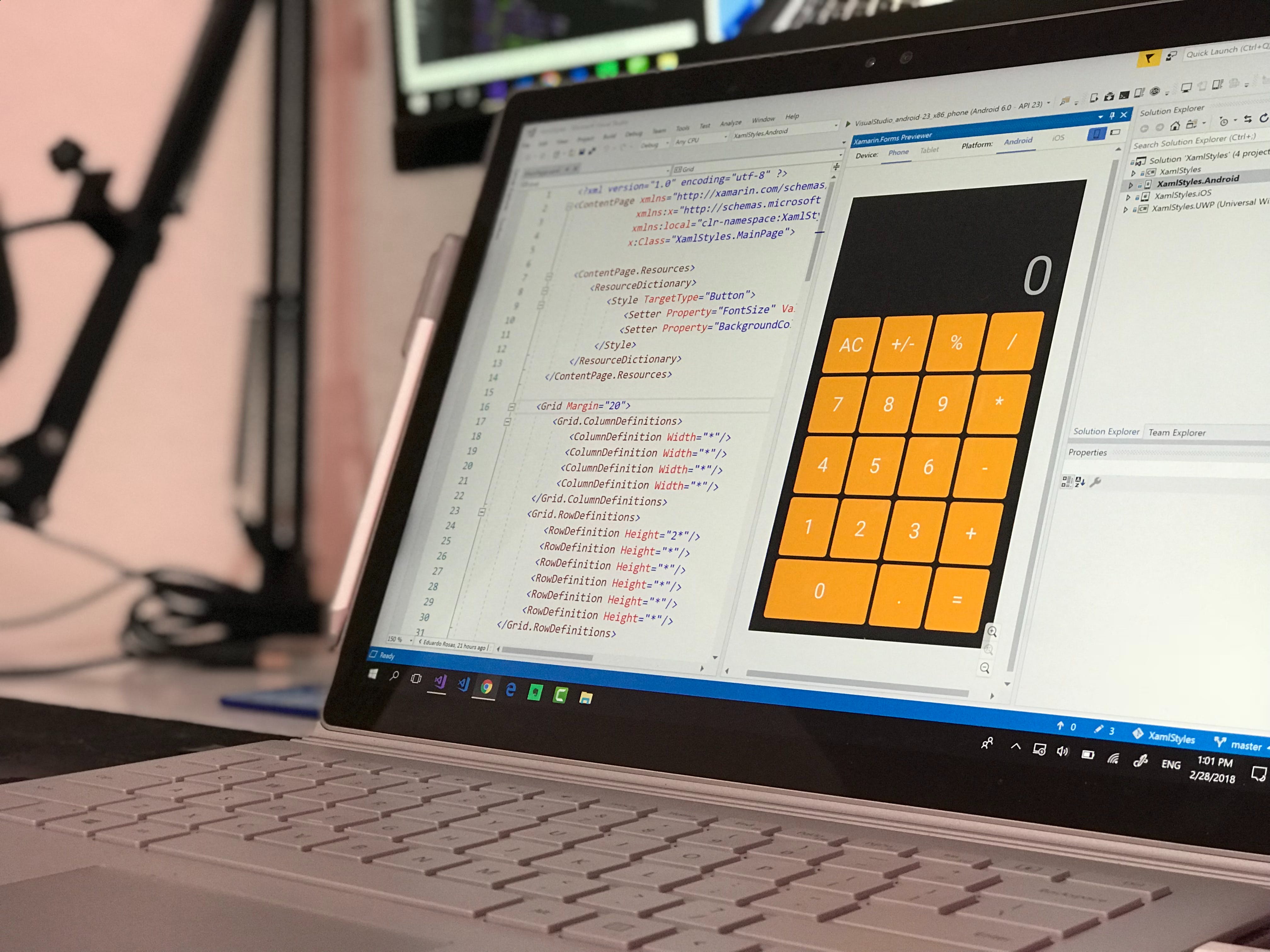Mobile App Development: What to Learn for Success

In today’s digital age, mobile app development has become a cornerstone for businesses aiming to connect with their audience effectively. With billions of smartphone users worldwide, the demand for innovative and efficient mobile applications is at an all-time high. At the heart of this dynamic field lies a blend of creativity, technical prowess, and strategic planning. Understanding mobile app development is crucial for anyone looking to make a significant impact in the tech industry.
Mobile app development encompasses creating software applications that run on mobile devices. These applications can be pre-installed on phones during manufacturing platforms or delivered as web applications using server-side or client-side processing. The development process involves several stages, including planning, design, development, testing, and deployment.
For businesses, an effective mobile app can enhance customer engagement, streamline operations, and open new revenue streams. Therefore, learning the intricacies of mobile app development becomes essential. This article will guide you through the critical skills, programming languages, and best practices you need to succeed in this field.
Ready to dive into the world of mobile app development and transform your ideas into successful applications? Visit Biz4Solutions to learn more about our comprehensive software services and how we can help you achieve your goals.
Essential Skills for Mobile Developers

To thrive in the field of mobile app development, developers need to master a diverse set of skills that go beyond basic coding. Here are some essential skills that every aspiring mobile developer should focus on:
- Proficiency in Programming Languages: Understanding core programming languages is fundamental. For Android development, Java and Kotlin are crucial, while iOS developers should be adept in Swift and Objective-C.
- Understanding of Mobile User Interface (UI) Design: A mobile developer must create user-friendly and visually appealing interfaces. Knowledge of design principles and user experience (UX) best practices ensures that the apps are intuitive and engaging.
- Familiarity with Development Frameworks: Frameworks like React Native, Flutter, and Xamarin enable cross-platform development, allowing developers to build applications that work seamlessly on both Android and iOS platforms.
- Backend Computing Skills: Mobile apps often require backend services. Understanding databases, server management, and APIs is crucial for handling data and integrating with other services.
- Testing and Debugging: Ensuring that the app runs smoothly is critical. Proficiency in various testing methodologies and debugging tools helps in identifying and fixing issues efficiently.
- Knowledge of App Store Guidelines: Each platform has its own set of guidelines for app submission. Familiarity with these guidelines ensures that the app gets approved and reaches the intended audience without delays.
By honing these skills, mobile developers can position themselves as valuable assets in the tech industry, capable of creating high-quality, user-centric applications.
Key Programming Languages to Master

In the realm of mobile app development, mastering key programming languages is a cornerstone for success. Here are the languages that every mobile developer should consider:
- Java: As the long-standing language for Android development, Java offers a robust and mature ecosystem. Its extensive libraries and consistent performance make it a favorite among developers.
- Kotlin: Officially supported by Google, Kotlin is rapidly becoming the go-to language for Android development. Its modern syntax and interoperability with Java make it a powerful tool for building efficient and reliable apps.
- Swift: Apple’s Swift has revolutionized iOS development with its clean and expressive syntax. Swift is designed to work seamlessly with Apple’s hardware, providing a smooth development process and excellent performance.
- Objective-C: Although Swift is the preferred language for new iOS projects, Objective-C remains relevant, especially for maintaining and upgrading existing applications. Understanding Objective-C can be beneficial for working on legacy code.
- JavaScript: For those interested in cross-platform development, JavaScript is indispensable. Paired with frameworks like React Native, JavaScript allows developers to create apps that run on both Android and iOS using a single codebase.
- Dart: Used with the Flutter framework, Dart is gaining popularity for building high-performance cross-platform apps. Its simplicity and speed make it an attractive option for developers aiming to deliver consistent user experiences across platforms.
By mastering these programming languages, developers can expand their capabilities and take on a wide range of mobile development projects, ensuring they stay competitive in the ever-evolving tech landscape.
Importance of User Experience Design

In today’s competitive mobile app market, the importance of user experience (UX) design cannot be overstated. A well-designed UX can make the difference between an app that users love and one that they quickly uninstall. Here’s why UX design is critical:
- First Impressions Matter: Users often decide whether to continue using an app within the first few seconds of interaction. A visually appealing and intuitive design can capture their attention and encourage them to explore further.
- Enhanced Usability: A good UX design ensures that the app is easy to navigate. This includes clear navigation paths, intuitive gestures, and well-organized content. When users can accomplish their tasks effortlessly, they are more likely to return to the app.
- User Retention: Effective UX design focuses on creating a seamless and enjoyable experience, which is vital for retaining users. Features like personalized content, smooth animations, and quick load times contribute to a positive user experience.
- Accessibility: Inclusive design practices ensure that an app is accessible to all users, including those with disabilities. This not only broadens the app’s user base but also demonstrates social responsibility and adherence to regulatory standards.
- Higher Conversion Rates: For apps with monetization strategies, such as e-commerce or subscription models, a well-crafted UX can significantly impact conversion rates. Clear calls-to-action, simplified checkout processes, and engaging content can drive user actions and increase revenue.
- Brand Loyalty: A memorable user experience fosters brand loyalty. Users who have positive interactions with an app are more likely to recommend it to others and remain loyal to the brand, leading to long-term success.
In essence, investing in UX design is investing in the app’s future. By prioritizing user needs and continuously iterating on feedback, developers can create apps that not only meet but exceed user expectations.
Best Practices for Mobile App Development

Adhering to best practices in mobile app development is essential for creating high-quality apps that meet user expectations and stand out in a crowded market. Here are some key best practices to follow:
- Conduct Thorough Market Research: Before starting development, it’s crucial to understand your target audience, their needs, and the competitive landscape. This helps in defining the app’s unique selling points and ensuring it addresses real user problems.
- Focus on Performance Optimization: Mobile users expect fast and responsive apps. Optimize your app’s performance by minimizing load times, reducing memory usage, and ensuring smooth transitions and animations. Performance should be a priority from the initial development stages.
- Implement Robust Security Measures: Security is paramount in mobile app development. Protect user data by implementing encryption, secure authentication methods, and regular security audits. Stay updated with the latest security practices to safeguard your app against vulnerabilities.
- Adopt Agile Development Methodologies: Using agile methodologies allows for iterative development and continuous feedback. This approach helps in quickly adapting to changes, fixing issues, and incorporating user feedback to enhance the app’s functionality and user experience.
- Ensure Cross-Platform Compatibility: With users accessing apps on various devices and operating systems, cross-platform compatibility is essential. Utilize frameworks and tools that support multi-platform development to reach a broader audience without compromising on quality.
- Prioritize User-Centered Design: Always keep the end-users in mind. Conduct usability testing, gather user feedback, and make necessary adjustments to ensure the app is intuitive and user-friendly. A user-centered design approach leads to higher user satisfaction and retention rates.
- Maintain Regular Updates and Support: Post-launch support is critical for the app’s success. Regularly update the app with new features, improvements, and bug fixes. Address user feedback promptly and provide stellar customer support to build trust and loyalty.
By following these best practices, developers can enhance the quality, performance, and user satisfaction of their mobile apps, paving the way for long-term success in the competitive app marketplace.
Future Trends in Mobile App Development
As technology continues to evolve at a rapid pace, the future of mobile app development is poised to bring about significant changes and innovations. Here are some of the key trends that are expected to shape the industry in the coming years:
- Artificial Intelligence and Machine Learning: AI and ML are becoming integral to mobile app development. These technologies can enhance user experiences through personalized content, intelligent recommendations, and improved decision-making processes. Expect to see more apps leveraging AI for advanced functionalities like image recognition, voice assistants, and predictive analytics.
- 5G Technology: The rollout of 5G networks will revolutionize mobile app development by providing faster data speeds, lower latency, and more reliable connections. This will enable the creation of more complex and resource-intensive applications, such as augmented reality (AR), virtual reality (VR), and real-time gaming experiences.
- Internet of Things (IoT): IoT integration is set to expand, offering new opportunities for mobile apps to interact with a wide range of connected devices. From smart home automation to wearable health monitors, IoT-enabled apps will provide users with more seamless and interconnected experiences.
- Progressive Web Apps (PWAs): PWAs combine the best of web and mobile apps, offering a responsive and fast user experience without the need for downloads or installations. As PWAs gain popularity, developers will need to focus on creating apps that are easily accessible and deliver high performance across various devices.
- Blockchain Technology: Blockchain is finding its way into mobile app development, particularly in areas like secure transactions, data integrity, and decentralized applications (dApps). This technology offers enhanced security and transparency, making it valuable for finance, healthcare, and supply chain sectors.
- Enhanced App Security: With increasing concerns about data privacy and security, future mobile apps will need to adopt more robust security measures. Biometric authentication, end-to-end encryption, and advanced threat detection are some of the security enhancements we can expect to see.
- Voice and Gesture Control: Voice and gesture-based controls are becoming more prevalent, driven by advancements in natural language processing (NLP) and sensor technologies. These intuitive interfaces will provide users with more convenient and hands-free ways to interact with their apps.
Staying ahead of these trends is crucial for developers and businesses looking to remain competitive in the ever-changing mobile app landscape. By embracing these innovations, you can create cutting-edge apps that meet the evolving needs of users and stand out in the market.
Ready to future-proof your mobile app development strategy? Contact Biz4Solutions today and leverage our expertise in creating innovative digital solutions tailored to your business needs!




